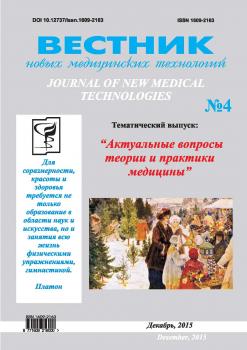The review of literature presents a brief history of study of adhesive process from the beginning of XX century to the present, the modern concepts of the pathogenesis of adhesive process in the abdominal cavity after surgery on the organs of the small pelvis, taking into account the development of molecular biology, biochemistry, immunology. Problems of study of adhesive process are relevant at this stage of development of surgery of high reproductive technologies and the use of surgical energies, careful approach to the tissues. The processes that occur in the peritoneum after surgery are described in detail. The mechanism of neoangiogenesis in the newly formed growths is presented in detail, conditionally and schematically. The role of growth factors of cytokines, fibrinolysis in the process of formation of adhesions is reflected. The sequence of processes leading to the formation of adhesions is presented in the time interval: from the moment of peritoneal damage during operation up to 12 days of the postoperative period, the time of formation of fibrous adhesions. The structure of connective tissue fibres by components fibres, i.e. the structure of collagen fibers of different types is examined. The review presents conditional classification of anti-adhesive drugs with description of the properties and characteristics by the method of their application, the composition of constituent substances, the forms of release.
abdominal disease, pathogenesis, ischemia, hypoxia, fibrinolysis, interleukins, matrix metalloproteinases, collagen, anti-adhesive barriers.
1. Burlev V.A., Dubinskaya E.D., Gasparov A.S. Peritoneal´nye spayki ot patogeneza do profilaktiki. Problemy reproduktsii. 2009. №3. S. 36-44.
2. Burlev V.A. Fenotipicheskie osobennosti nedif-ferentsirovannykh form displazii soedinitel´noy tkani u patsientok s tazovymi peritoneal´nymi spaykami. Problemy reproduktsii. 2012. Tom 18. №2. S. 8-14.
3. Goncharova N.S., Moiseeva O.M., Aleshina G.M., Shlyakhto E.V. Matriksnaya metalloproteinaza-9 i ee ingibitor u patsientov s aortal´nym stenozom. Kardiologiya SNG. 2007. Tom 5. №1.
4. Dubinskaya E.D. Sostoyanie reproduktivnoy sistemy bol´nykh s tazovymi peritoneal´nymi spaykami i besplodiem. Vrach. 2010. №8. S. 43-46.
5. Lavrinenkova I.Z. Effektivnost´ ambulator-noy reabilitatsii reproduktivnogo zdorov´ya posle khirurgicheskogo lecheniya ginekologicheskikh zabolevaniy. Avtoref. dis. kand. med. nauk. M., 2005. S. 16-20.
6. Mailova K.S. Faktory riska i profilaktika spaechnogo protsessa. Avtoreferat… kandidata meditsinskikh nauk. M., 2012. S. 4-7.
7. Matveev N.L, Arutyunyan D.Yu. Vnutribryushnye spayki, nedootsenivaemaya problema. Endoskopicheskaya khirurgiya. 2007. №5.
8. Awonuga A.O., Fletcher N.M., Saed G.M., Diamond M.P. Postoperative Adgesion Development Following Cesaren and Open Intra-Abdominal Gynecological Operation. A review report Sci. 2011. Vol.18. P. 1166-1188.
9. DiZerega G.S. Peritoneum, peritoneal healing and adhesion formation. In DiZeregaGS(ed.) Peritoneal Surgery. NY: Springer, Berlin, Heilderbergh, 2006. P.3-38.
10. Fletcher N.M., Jiang Z.L., Diamond M.P. Hypoxia-generated superoxide induces the development of the adhesion phenotype. Free Radic. Biol. Med. 2008. Vol. 45. P. 530-536.
11. Frank D. Yelian, M.D., Ph.D., Valerie I. Shavell, M.D., Michael P. Diamond M.D. Early demonstration of postoperative adhesions in a rodent mod. Fertility and Sterility. 2010. Vol. 93. No. 8.
12. Jiang Z.L., Fletcher N.M., Diamond M.P. Hypoxia regulates iNOS expression in human normal peritoneal and adgesion fibroblasts throuth nuclear kappa B activation mechanism. FertilSteril. 2009. 91(2). P. 616-621.
13. Kamel RM. Prevention of postoperative peritoneal adhesions. Eur J ObstetGynecolReprodBiol. 2010. 21. P. 290-303.
14. Koninckx P.R., Molinas C.R., Binda M.M. Profilaktika posleoperatsionnykh spaek. Problemy reproduktsii. 2009. №3. C. 36-44.





